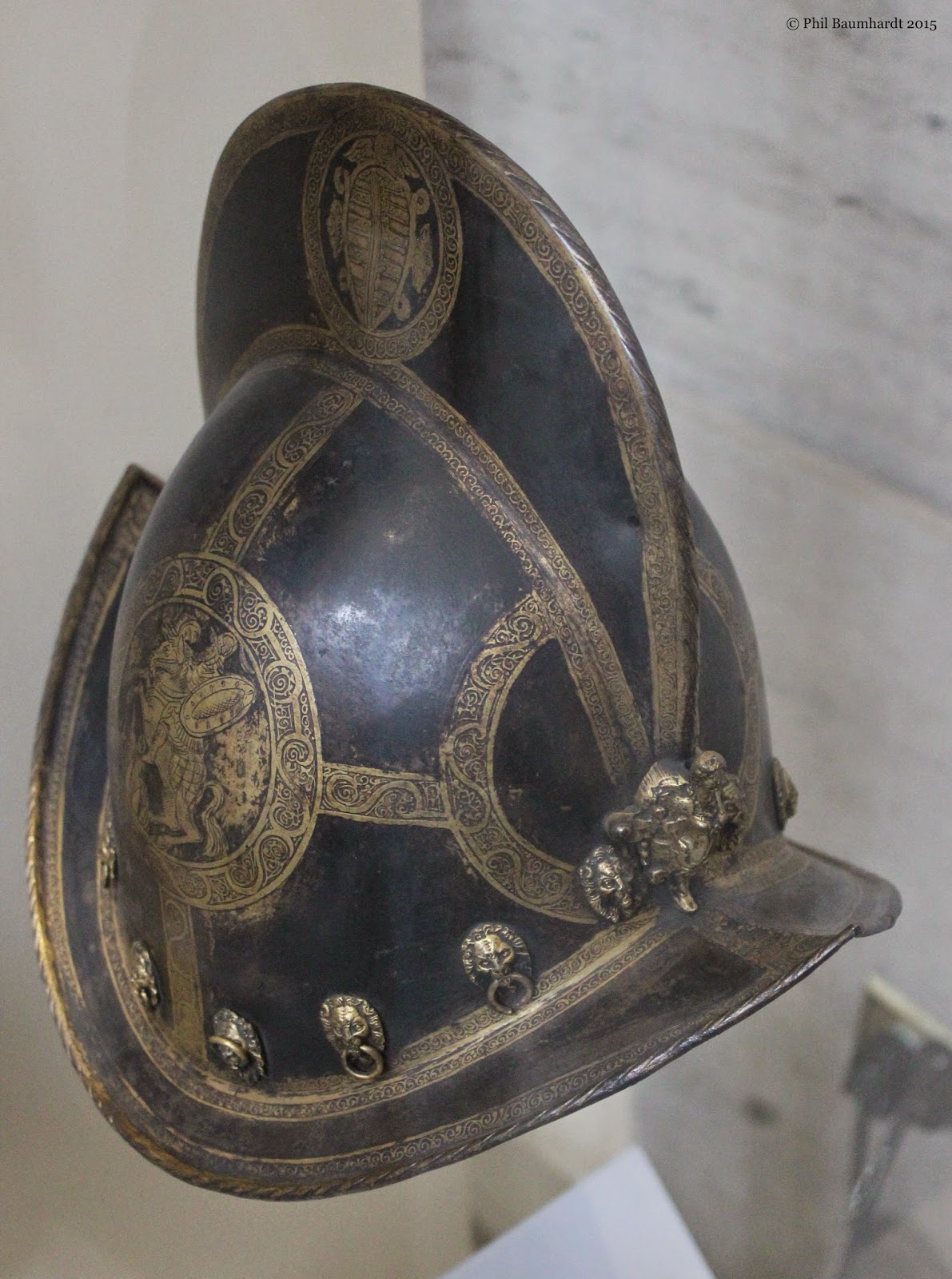I am a filmmaker and primitive bladesmith. For my films and videos check out: https://www.youtube.com/Blackhardt72
Wednesday, July 29, 2015
Feast of St. Olaf: Viking, King, Saint
This day today, the Battle of Stiklestad was fought in Norway in 1030 A.D. Olaf II of Norway was attempting to reclaim the throne, but he died in the battle and was later canonized by the Church. Today is "Olsok", the day he is remembered.
Thursday, July 23, 2015
Friday, July 17, 2015
Completed fantasy sickle/kama
I forged this from a specific designed that was based on a kusari-gama. This will hopefully be used in an upcoming short film.
Saturday, June 13, 2015
Wednesday, May 20, 2015
French Smallsword (1780 A.D.)
While at first glance it may look like a delicate weapon, it is in fact quite deadly.
Gilded hilt.
The blade, while lacking a cutting edge, is fluted in what appears to be something of a star-shape, making the sword very rigid and strong. The purpose of this weapon was to skewer and kill your opponent.
The star-shaped cross section of the blade would leave a horrible wound that have great difficulty healing. Any thrust to the torso would be a serious and potentially fatal wound, even if it did not instantly strike a vital organ.
The tip of the sword is very strong due to the fluting, and it would puncture heave, layered clothing. It is reminiscent of the chisel-tipped bayonets of the Russian Mosin-Nagant rifles of World-War II.
The sword is on display at the DIA.
Saturday, May 9, 2015
German Hunting Swords from the 18th century
Gilt bronze hilt and ivory grip.
The "hunting sword" was an evolution of the "hanger" sword that dates to about 1700. The blades are shorter and slightly more curved, and the name derives from the motifs that decorate it (such as the bird or hawk on this example). The hunting sword was popularized in Britain by Admiral John Benbow.
Wednesday, April 29, 2015
Historical Example of Viking Sax with a Hilt
I found a picture of this sax while I was doing background research for my backyard swordsmithing project. It was found in Oppland, Norway.
Monday, April 27, 2015
Screech Owl Visits the Forge
This Eastern Screech Owl decided to roost in the spruce right next to the forge today. I therefore decided not to do any bladesmithing, and let the little guy sleep.
Thursday, April 23, 2015
Homemade Viking Seax (Single-edged sword)- Completed
Forged and finished by hand, this blade began as a discarded leaf-spring.
Inspired by the Norse sax.
Video series of the entire build on Youtube: https://www.youtube.com/watch?v=Cq3MLsHe040
Wednesday, April 22, 2015
Knife forged from a Coil-spring: Day 1
Coil-spring in the forge today. I cut a piece of it off and started forging it into a knife. Coil-springs are supossedly high-carbon steel, so I should get some decent knives from it.
The rough shape. With a clip point and narrow tang, it actually looks like a knife!
Video coming soon to my Youtube channel.
Monday, April 20, 2015
Homemade Viking Sword- Pommel (Completed)
You can tell from the picture, but the three pieces of the pommel has two brass rods and some JB Weld holding them together.
Wednesday, April 15, 2015
Homemade Viking Sword- Grip (Work in Progress)
Carved out the slot for the tang today. I have another maple slab that will complete the grip. I plan on wrapping the grip in leather.
Tuesday, April 14, 2015
Monday, April 13, 2015
German "Calendar" Sword, 1576 A.D. Century
The guard is a modern reconstruction.
The ricasso and forte. Maker's mark is on the left.
The blade is the one on the top. The deep fuller and wide cutting edges is reminiscent of Viking Age swords.
Sunday, April 12, 2015
Italian Cinqueda (1480 AD)
A broad-blade single handed short sword that is the descendent of Migration and Viking era swords, it was used between the late 15th and mid-16th centuries. Note the two fullers.
The grip is made from bone.
Close up of the cinqueda tip.
Friday, April 3, 2015
German Swept-hilt Rapier (1630/40)
If you look closely on the fuller there are thin marks that is actually a maker's mark. It is the infamous "Running Wolf" mark of the blade smiths of Passau. The mark has been found on blades as old as the 13th century.
Close up of the guard.
Some decorations on the hilt.
On display at the Detroit Institute of Arts.
Saturday, March 28, 2015
Reitschwert (Sword) from Saxony
Sword used by heavy cavalry, reiters, and harquebusiers between the 16th and 17th century in the Holy Roman Empire and Northern Europe.
German sword, dating from 1580 A.D.
The reitschwert is a hybrid between a bastard sword and a rapier.
Leather scabbard.
Possibly silver fittings on grip and guard.
Blade stamp in fuller.
Possibly maker's mark at the end of the fuller.
On display at the Detroit Institute of Arts.
Wednesday, March 25, 2015
German Morion (helmet) from Saxony (1580/90)
The steel has been blackened, etched and gilded. Beautifully detailed it is obvious that it was never intended to see combat, this was worn by the personal guard of the Prince Electors of Saxony (the Trabantenleibgarde). Black and gold were the livery colors of the electors.
On display at the Detroit Institute of Arts.
Subscribe to:
Posts (Atom)
















.png)
































